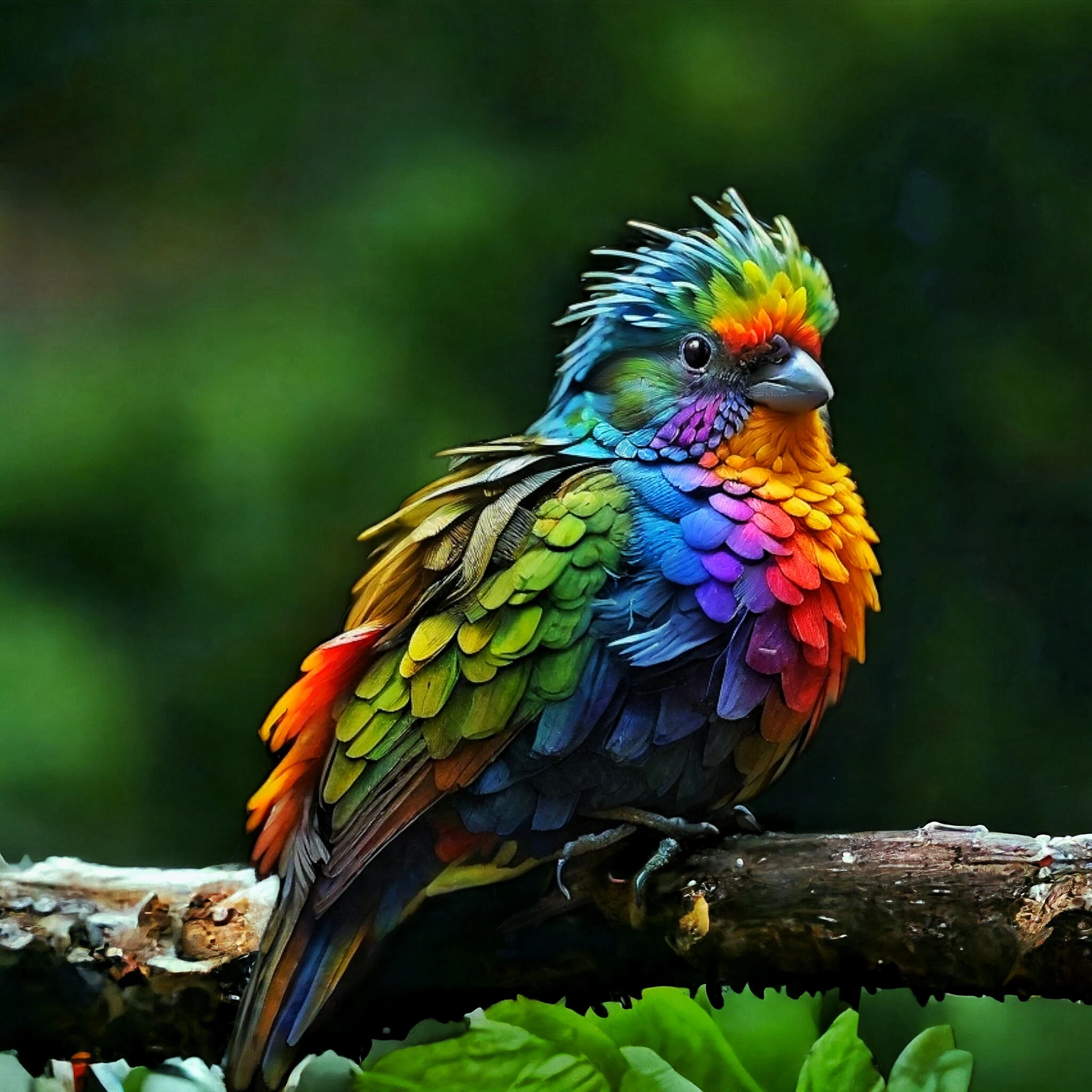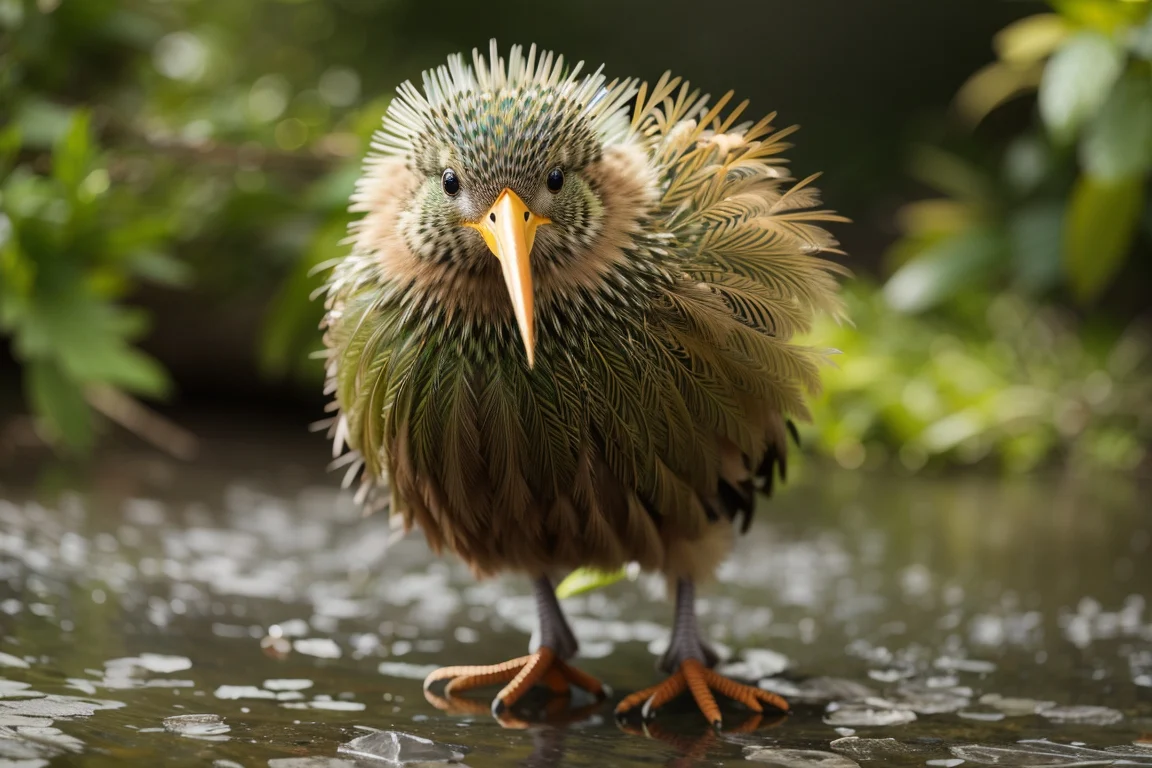The Wonder of Flightless Birds
While most birds take to the skies with ease, not all are equipped for powered flight. Flightless birds comprise around 60 species, including some of the largest and most unique birds on Earth. Though they lack the ability to fly, flightless birds have evolved in fascinating ways to thrive in their environments. These remarkable birds showcase the incredible diversity and adaptability of avian life.
Ostriches - The Largest Living Bird
The ostrich is the largest and heaviest living bird, standing up to 9 feet tall and weighing over 300 pounds. Native to Africa, ostriches are flightless but can run at speeds up to 43 mph, using their long, powerful legs and two-toed feet. Their wings are vestigial, with small feathers that function more like arms. Ostriches use their muscular legs and sharp claws for defense and can deliver dangerous kicks capable of killing predators.
Ostriches are well-adapted to life in the African savanna and deserts. Their long, bare legs help them run swiftly and their eyes are large with excellent vision. Ostriches have specialized feathers lacking barbules that keep them cool in the heat. They can go for extended periods without water and get moisture from plants. Ostriches are also the only birds with a bladder, allowing them to store urine.
These fast runners' ostriches rely on their speed to escape threats. Their brown and white plumage provides camouflage in open habitats. Ostriches are omnivorous, feeding on plants, seeds, roots, and small animals. They are unique among birds by having only two toes on each foot. Ostriches are the sole living members of the genus Struthio.
Penguins - Birds of the Sea
Penguins are a group of flightless seabirds found exclusively in the southern hemisphere. While most birds take to the skies, penguins have become superbly adapted to life in cold ocean environments after 66 million years of evolution. Their distinctive tuxedo-like plumage and upright posture set them apart from all other birds.
Penguins use their flipper-like wings and streamlined bodies to “fly” through the water instead of the air. Their powerful legs and webbed feet propel them gracefully through the water as they hunt fish and krill. Penguin bodies are optimized for swimming - their bones are solid instead of hollow, their feathers are short and rigid, and their wings are stiff and flattened to function like flippers.
These incredible adaptations allow different penguin species to dive deep and far on hunting forays. The Emperor penguin can reach depths of 1,800 feet and stay submerged for up to 22 minutes at a time. Penguins keep warm thanks to a layer of fat and waterproof oiled feathers that repel cold ocean water.
On land, penguins walk with an upright, waddling gait that conserves energy while navigating rocky shores and icy terrain. While awkward on land, in the water, penguins move with speed and agility. Populations are found in Antarctica, Australia, New Zealand, southern Africa, and along the coast of South America. Some species, like the African penguin, are endangered as climate changes impact their fish prey. As flightless seabirds, penguins showcase amazing adaptations that allow them to thrive in varied environments across the southern hemisphere.
Kiwis - Nocturnal Curiosities
Found only in New Zealand, kiwis are unique nocturnal birds with distinctive appearance and behaviors, unlike any other avian family. About the size of a chicken, brown kiwis are the smallest flightless birds while great spotted kiwis are the largest at 20 inches tall and weighing up to 8 pounds. All five kiwi species are endangered.
Kiwis lack a keel on their sternum, meaning they do not have the muscle structure or wing shape required for flight. Their wings are tiny, tipped with cat-like whiskers, and hidden by shaggy, hair-like feathers. Without the ability to fly, kiwis evolved to grow strong legs suited to foraging along forest floors.
These strange nocturnal birds have barrel-shaped bodies, long beaks excellent for sniffing out worms and other prey, and nostrils located at the tip of their beak. Kiwis have small eyes but highly developed senses of smell and hearing, along with whiskers that help them navigate at night. Their long, flexible beaks can probe into the ground and snip prey.
Kiwis mate for life and females lay up to one egg per year in burrows. The male incubates the egg while the female returns to the forest to feed. Kiwi chicks hatch fully feathered and are able to fend for themselves, but have a high mortality rate due to predators. Conservation efforts including predator control and captive breeding programs are underway to protect remaining kiwi populations.
Cassowaries - Australia's Deadliest Bird
Found in the rainforests of northeastern Australia and New Guinea, cassowaries are large, flightless birds most closely related to emus. Standing over 5 feet tall and weighing up to 130 pounds, cassowaries are rightfully considered the most dangerous birds in the world. With their jet black feathers, bright blue heads, and tall helmet-like casques on top of their heads, cassowaries cut striking figures in the rainforest understory.
Cassowaries' wings have adapted into stiff, keratinous quills akin to porcupine spines that they use for shredding fruit and warding off threats. A double row of sharp claws makes these birds' feet into deadly weapons. Using their powerful legs, cassowaries can jump 5 feet straight into the air and run up to 31 mph - faster than an Olympic sprinter! Even more dangerous are cassowaries' bony casques that they use as battering rams.
These solitary birds have a reputation for being intensely aggressive. Using their dangerous kicks, claws, and leaps, cassowaries can easily injure or kill predators and humans who disturb them or encounter them on roads. Their threat displays include deep booms, hisses, and rumbling growls to warn off intruders. While dangerous, cassowaries still play an important role in dispersing rainforest seeds and are fascinating examples of adaptation in flightless birds.
Rheas - South American Runners
Rheas are large, flightless birds native to South America. They resemble ostriches but are smaller in stature, reaching about 5 feet tall and weighing 55-100 pounds. There are two rhea species - the greater and lesser rheas. These fast-running birds inhabit grasslands, savannas, scrublands, and agricultural areas across much of South America.
Built for running, rheas have slender legs with three-toed feet and long necks and legs that help them spot threats while grazing. They can sprint at speeds over 35 mph for long distances. Rheas' small wings have adapted for balance and turning while running instead of flight. Their soft gray, brown, and white plumage provides excellent camouflage in open habitats.
Rheas are omnivorous, feeding on plant matter as well as insects, small vertebrates, and eggs stolen from nests. Like ostriches, rheas swallow stones and pebbles that grind up food in their gizzard. They breed seasonally and males incubate and raise the young. Rheas' loud duets of booming, drumming, and whistling calls communicate over long distances across open terrain. Though not endangered, rhea populations face threats from agricultural land use and hunting in parts of their range.
Conclusion
Flightless birds demonstrate how evolution adapts avian anatomy and behaviors for life without powered flight. Ostriches, penguins, kiwis, cassowaries, rheas, and other flightless birds thrive using flightlessness as an advantage. They showcase the impressive diversity of form and function found in birds around the world. Though they do not take wing, flightless birds are worthy of appreciation and conservation for their unique and vital roles in ecosystems, from the driest deserts to the iciest oceans.






Post a Comment